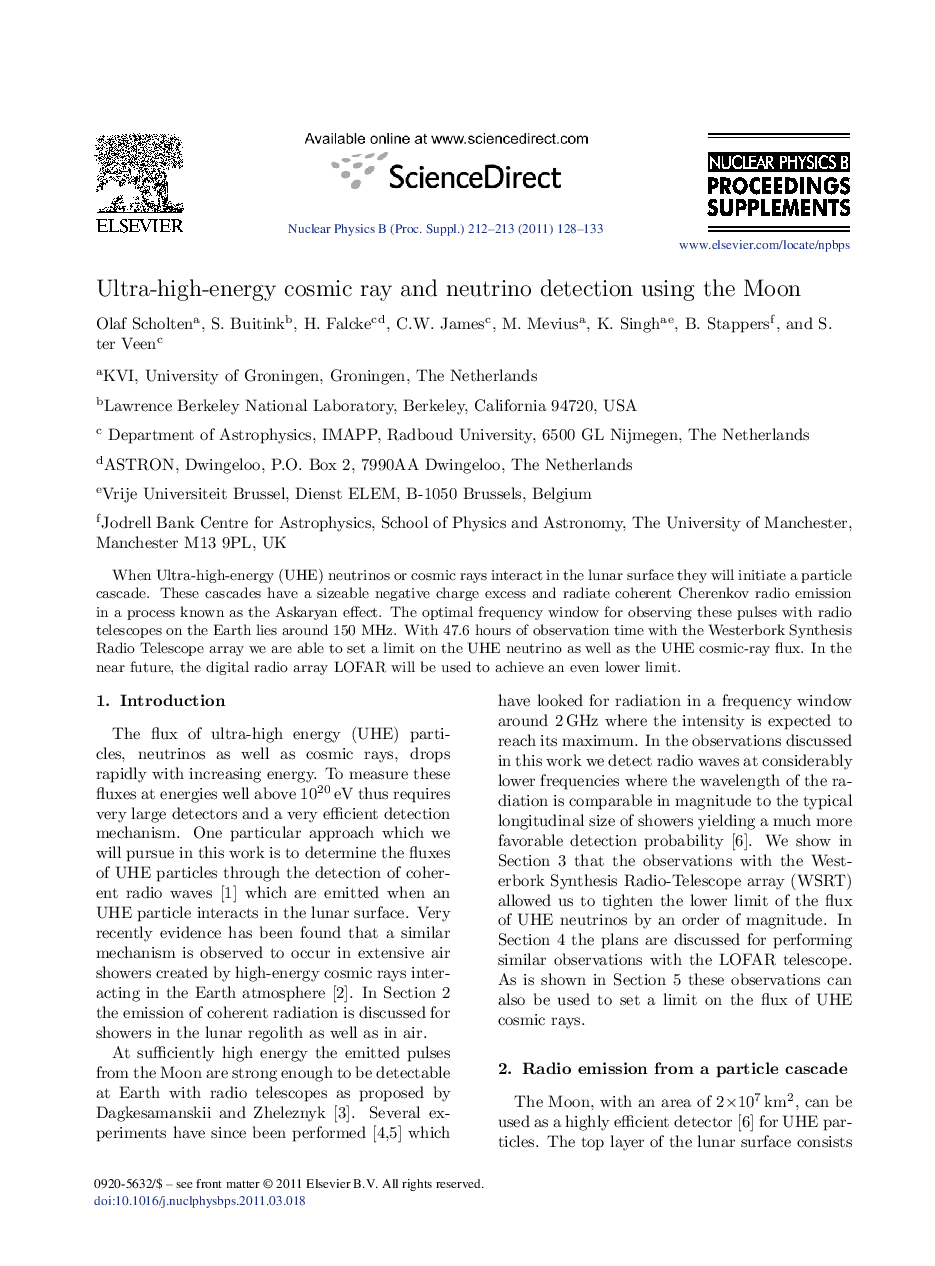| Article ID | Journal | Published Year | Pages | File Type |
|---|---|---|---|---|
| 1849002 | Nuclear Physics B - Proceedings Supplements | 2011 | 6 Pages |
Abstract
When Ultra-high-energy (UHE) neutrinos or cosmic rays interact in the lunar surface they will initiate a particle cascade. These cascades have a sizeable negative charge excess and radiate coherent Cherenkov radio emission in a process known as the Askaryan effect. The optimal frequency window for observing these pulses with radio telescopes on the Earth lies around 150 MHz. With 47.6 hours of observation time with the Westerbork Synthesis Radio Telescope array we are able to set a limit on the UHE neutrino as well as the UHE cosmic-ray flux. In the near future, the digital radio array LOFAR will be used to achieve an even lower limit.
Related Topics
Physical Sciences and Engineering
Physics and Astronomy
Nuclear and High Energy Physics
